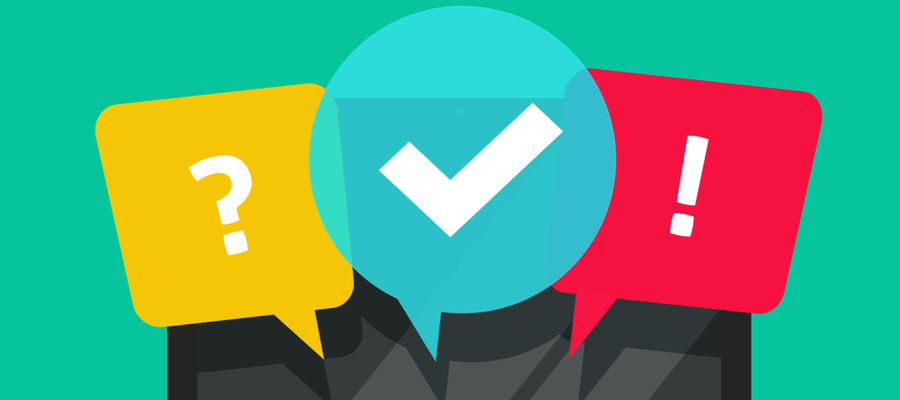Do you know what a cognitive bias is and how many there are to date? Are you aware that certain cognitive biases must be taken seriously in the teaching world? Do you have any idea of how to help a teacher avoid them? Can you tell a cognitive bias from a myth? Test your knowledge by answering the following five questions.
I invite you to answer the following riddle spontaneously:
“I am the sister of two Olympic athletes. But these two athletes are not my sisters. How is this possible?”
SOLUTION
“These two Olympic athletes are my brothers! Just because I’m a girl doesn’t mean I only have sisters.”
Well done, if you got the correct answer! Your critical thinking skills are well trained. But chances were you got it wrong, even though you thought you were thinking logically and rationally.
1. True or false? Cognitive biases are perceptual distortions that can be said to be to our mind what optical illusions are to our visual system.
CORRECT ANSWER
TRUE
Cognitive biases cause us to make incorrect judgments or wrong decisions in our daily lives. These shortcuts of the mind that allow the brain to simplify information processing are unavoidable, but we can learn to detect them better, starting with a better knowledge of them.
Here are two examples of common cognitive biases:
Confirmation bias. Also called hypothesis confirmation bias, this cognitive bias is the tendency to favour information that supports our assumptions or preconceived ideas and to underestimate or ignore information that does not.
Overconfidence. This cognitive bias, which affects more than half of us (!), consists of overestimating our abilities, especially compared to those of others. Many of us would therefore believe that we have an above-average intelligence…
Find out more: Cognitive biases: when our brain plays tricks on us
2. Approximately how many cognitive biases are known to date?
A) About a dozen
B) About 100
C) About 250
D) More than 500
CORRECT ANSWER
C.
There are about 250 cognitive biases that are generally classified in one of the following five categories:
| Bias… | our perception is affected by… |
|---|---|
| attentive or of attention | selective factors of our attention |
| mnemonic | factors related to our memory |
| of judgment | a distortion of our judgment |
| of reasoning | paradoxes in our reasoning |
| linked to the personality | socio-cultural factors |
Note that some people also include sensory-motor biases in this categorization.
Find out more: Cognitive biases: when our brain plays tricks on us
3. What is the name of the cognitive bias described below?
This cognitive bias occurs when the simple fact of showing someone that you believe in their chances of success influences their performance, especially if you are in a position of authority or influence over that person.
A) The bias blind spot
B) The halo effect
C) The curse of knowledge
D) The Pygmalion effect
CORRECT ANSWER
D.
The Pygmalion effect (or Rosenthal and Jacobson effect) was named after the Greek mythological legend in which the sculptor-king Pygmalion fell in love with Galatea, his creation; a statue brought to life. This effect can interfere with the teacher-learner relationship and significantly affect learning. This is also the case for the other three biases: the bias blind spot, the halo effect, and the curse of knowledge.
Find out more:
4. True or false? In addition to cognitive biases, some myths can be a barrier to learning.
CORRECT ANSWER
TRUE
Yes! Some myths are hard to ignore and can hinder learning. This is the case for the following three:
- Those who sleep little are more productive.
- Feeling confused and frustrated while learning is a bad sign.
- Knowing your learning “style” is a must.
Not to be confused with cognitive biases, myths are widely held beliefs with an aura of credibility but which are false.
Find out more: 3 myths that prevent you from learning
5. Which of the following can help teachers effectively combat cognitive bias?
A) Develop “cognitive resistance” or “learning to think against yourself.”
B) Relying more on intuition.
C) Have high expectations of your students.
D) Having low expectations of your students.
CORRECT ANSWER
A. and C.
First of all, every teacher must be aware of the phenomenon of cognitive bias and seek to prevent it in order to promote the success of each learner. According to developmental psychologist and neuroscientist Olivier Houdé, the way to do this is to develop one’s “cognitive resistance” or “learning to think against oneself.” Next, professors and researchers David Trouilloud and Philippe Sarrazin suggest “encouraging teachers to have high expectations for their students,” citing the study by Madon and colleagues who found that the positive impact of high expectations seems to outweigh the negative impact of low expectations from teachers toward their learners. According to their synthesis, Trouilloud and Sarrazin note that high expectations participate in four ways to maximize learner success, as teachers are more likely to:
- Create a warmer emotional climate.
- Provide more feedback on performance.
- Give more content and more challenging content to learn.
- Provide more opportunities for learners to answer and ask questions.
Find out more:
Author:
Catherine Meilleur
Creative Content Writer @KnowledgeOne. Questioner of questions. Hyperflexible stubborn. Contemplative yogi.
Catherine Meilleur has over 15 years of experience in research and writing. Having worked as a journalist and educational designer, she is interested in everything related to learning: from educational psychology to neuroscience, and the latest innovations that can serve learners, such as virtual and augmented reality. She is also passionate about issues related to the future of education at a time when a real revolution is taking place, propelled by digital technology and artificial intelligence.







Leave A Comment